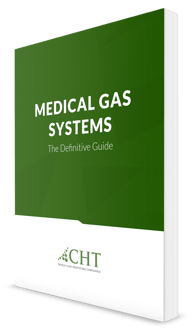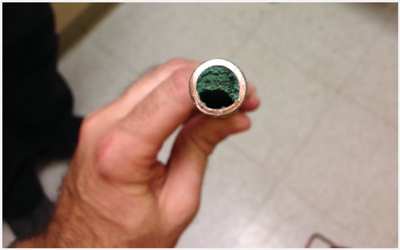
What is a Medical Vacuum Pump?
A medical vacuum pump is a device used in healthcare settings that removes gases and fluids from an enclosed space. Its purpose is to create a vacuum or deliver a steady stream of gas.
While the Joint Commission (JC) and the Centers for Medicare & Medicaid Services (CMS) keep us on our toes by continually rolling out new standards and recommendations, one thing has stayed consistent for healthcare facility managers looking to keep their patients safe:
The need for quality suction equipment, specifically a medical vacuum system.
Suctioning is a critical part of patient care and, in some instances, a potentially life-saving system.
The vacuum you create in the pump room operates equipment, makes surgery faster, safer, and cleaner, and helps patients breathe more easily. Like most medical systems, medical vacuum systems need regular care.
Before discussing the various kinds of vacuum pumps and their inspection requirements, we need to consider the biggest challenge most hospitals run into with vacuum systems: what they suck up. The entire piped system is designed to pull just air out of the way but often drags with it fluids, solids, and aerosols that all want to stick to the piping, parts, and the pump’s internal components.

So, for example, do you want to learn how to ensure the operating rooms' canisters are clean and unobstructed, keeping your patients safe?
I'll walk you through the whole process, starting with...
What Makes Up a Medical Vacuum System?
A medical vacuum system includes multiple vacuum pumps, a receiver, and a control pane and must fully comply with the latest edition of NFPA99.
The medical gas and vacuum piping systems must be designed to meet the specific requirements of each hospital. The goal of designing medical gas and vacuum systems is to provide a safe system with a sufficient flow of gas or vacuum and to provide the required pressure.
Vacuum is available from wall inlets (pipeline) located in your healthcare facility. The vacuum is created by running a mechanical pump like a compressor, but instead of producing high pressure in the pump and sending that compressed gas to the receiver tank, this pump sucks the gases out of the receiver tank and forces the compressed air outside, leaving a vacuum in the receiving tank that connects to the house piping. The major source of the vacuum is a pump, typically located in the basement of the building.
Vacuum systems are an essential part of medical gas systems in healthcare facilities. Pumps must be able to provide "high flow and constant, uninterrupted negative pressure."
There are different types of pumps to choose from to ensure patient safety. They are specifically developed to comply with your facility's medical requirements and regulations.
Types of Vacuum Pumps for Medical and Hospital Use
A medical vacuum pump system must meet NFPA99 design standards. "The minimum size is a duplex system where one vacuum pump can carry the entire load of the hospital, and the 2nd pump (lag pump) then provides 100% backup."
Powerex was the first company to package NFPA99-compliant scroll systems. Their medical vacuum brochure covers the benefits of the different pumps and how it works.
Dry Claw Pump Technology
- Efficient Technology
- Dry Compression
- Extremely Low Maintenance
- No Water and Sewage Costs
How it works:
"Inside the pump housing, two claw-shaped rotors take in air as they rotate in opposite directions. The air is compressed by the rotors, then discharged through a silencer to the atmosphere. The pumping chamber is dry. There is no contact between the rotors or the cylinder wall eliminating internal wear and parts to replace. The rotors are synchronized by gears requiring a small amount of oil in the gear housing."
Dry Rotary Vane Technology
- No Oil
- Long Vane Life
- Low Vibration, Highly Efficient, Low Energy Use
- No Water and Sewage Costs
How it works:
A rotor is mounted eccentrically in the pump cylinder and contains several sliding vanes. As the rotor turns, centrifugal force causes the vanes to slide outward, creating a seal against the cylinder wall.
Oil-Sealed Rotary Vane Technology
- Air Cooled Design
- Lowest Initial Cost
- Long Vane Life
- No Water and Sewage Costs
How it Works:
"A rotor is mounted eccentrically in the pump cylinder and contains several sliding vanes. As the rotor turns, centrifugal force causes the vanes to slide outward against the cylinder wall."
Tri-Tech Medical offers downloads on medical air vacuum pump system specification sheets. They are designed to meet healthcare facility requirements meeting all NFPA99 and NEC requirements.
They are also designed for ease of installation - the only field connections are the inlet, exhaust, and power connections.
System pipes can get clogged and begin to deteriorate. With this deterioration comes low suction in the operating rooms. Suction refers to the application of negative pressure, which, in turn, creates the movement of solids, air, and liquids.
In short, your equipment running at full capacity will boost OR productivity and increase procedures resulting in more revenue. Properly functioning equipment also lowers the chances of cross-infection for your patients caused by backflow from clogged vacuum piping.
Now that I discussed the types of pumps and how they work, I'm going to show you how to ensure your suction equipment performs its desired task.Good Suction Relies on Clean Equipment.

15 Actionable Steps to Make Your Medical Vacuum Pipes "Ailment" Free
Step 1: Have a technician listen to the machine and look at the mechanical connections to verify they are working freely.
Step 2: Perform a test of the power voltage and amperage to measure/verify good operation.
Step 3: Clock times to note the system is working correctly.
Step 4: Check and test start-up and stop points for duplex or triplex systems.
Step 5: Alarms need to be tested for pressure sensitivity and to confirm they send signals to the local board and the secondary alarm terminal outside the maintenance area.
Step 6: Rotary vanes (if this type of pump) need to be visually inspected to ensure no extraordinary wear.
Step 7: Pumps turn on bearings at high speeds. They need to be lubricated and, depending on the brand of pump, require lubricants to be checked or replaced.
Step 8: Attached devices (valves, gauges, pressure switches, and relays) need to be measured to confirm the system monitoring of the storage tanks is working correctly.
Step 9: Check your traps and filters for replacement from all the debris that has been pulled into the system over the last few months.
Step 10: The system should be checked for leaks in the pump room where the pressures are the highest. Even the smallest leaks can make your vacuum pumps run unnecessarily, wasting energy and wearing the pumps quicker.
Step 11: The room condition should be assessed to verify the ambient temperature and airflow. Proper temperature and airflow keeps the vacuum working smoothly.
Step 12: Note the temperature of the exhaust.
Step 13: Proper placement and construction of the external exhaust port should be verified.
Step 14: Recommend necessary repairs and or upgrades.
Step 15: Recommend extra inventory to keep on hand to support your preventative maintenance activities.
GlobalVac discusses detailed examples of maintenance practices for Claw Medical Vacuum Pump systems to enhance efficiency and reliability.
"These systems use a frictionless, dry, multi-claw technology. The claws are synchronized through precision gears and rotate in opposite directions, building a highly efficient vacuum system. At no point do the claws come into contact with each other, eliminating friction that would otherwise necessitate the need for a sealing fluid or lubricant inside the pumping chamber."
Figure 1: Sample Medical Air System PM Sheet from CHT
.png?width=500&height=688&name=CHT%20Sample%20PM%20Sheet%20(1).png)
Best Practices for a Rotary Vane Medical Vacuum Pump:
- Vane Replacement – This is one product where worn-out vanes will make your work difficult. Regular check-ups and maintenance is required.
- Change of Oil – A rotary vane medical vacuum pump requires regular oil replacement every couple of working hours.
- Vacuum Production Units – These need to be frequently replaced to enhance fuel consumption and efficiency.
Signs of Clogged Medical Vacuum Pipes

Medical vacuum pumps are designed to remove unwanted gases and fluids. Regular preventative maintenance of your medical gas sources not only keeps your hospital running efficiently but keeps the professional staff happy and confident since they do not have to provide workarounds for inadequate equipment.
4 Signs Your System is NOT Running at Optimal Performance
1. Low Flow Rate or Suction – Suction is the process by which a liquid flows into a partial vacuum or a place of low pressure. When the pressure is low, less matter will propel into the low-pressure area. Therefore, a reduction in the suction rate indicates that the pressure pipes are clogged.
2. Complaints of Suction Problems by Medical Experts – During suction, vacuums do not attract matter innately but rather by the higher-pressure air found on the outside of the vacuum cleaner. The reduction of this activity is a clear indicator that the pipes are clogged.
3. Slow Surgical Procedures - Vacuum machines are required during surgical procedures. When surgical delays are experienced, it could be a sign that the medical pipes are clogged.
4. Use of Portable Vacuum Devices – Some medical experts use portable vacuum devices rather than repairing their facility's clogged vacuum systems.
Optimizing the flow of vacuum in your operating room boosts the productivity of your surgical staff. It also results in better patient protection and better turn-around time in the OR.
Conclusion
Reliable medical gas and vacuum systems are critical to patient care and provide life-saving/supporting gases in your healthcare facility.
Analyzing and implementing a program for your medical vacuum system is the best way to ensure your patients, staff, and visitors are safe.
If you have questions concerning the best ways to keep your vacuum or any medical gas system working at its optimum rates, contact your CHT representative.
Want to learn how CHT can help you restore your facility's medical vacuum?
image credit: Analyst




